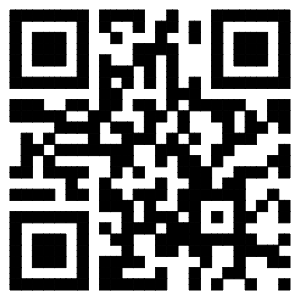Why is BASE-8 the mainstream network solution for data centers?
In the past few years, optical fiber cabling solutions in data centers have continuously evolved, and solutions based on 8-core optical fibers are gradually becoming popular and even becoming the mainstream choice in optimizing structured cabling and matching transceiver development routes. As this trend continues to develop, it is very helpful to understand the factors behind the industry and analyze which challenges are driving the development of the base-8 solution. Looking back at the past and looking forward to the future, we can further understand the value and market potential of the base-8 solution.
To understand how the base-8 solution was born, we must review the history of data center cabling. Many people who have been in the cabling industry for a long time may recall the hard days of terminating and installing optical fibers in the field, operating one fiber at a time. As the number and scale of data centers continue to grow, designers and installers have to manage hundreds or even thousands of single-core and dual-core fiber connectors. However, because space and time are very valuable to data centers, this traditional method is definitely difficult to meet the requirements of deployment density and speed.
Therefore, in 1996, MTP (MPO type) connectors appeared, which completely changed the design and deployment of data center cabling. It can accommodate 12 optical fibers in a cable and plug, and has made great progress in meeting high levels of speed, density, and ease of installation.

The first common question is when and why was the base-12 solution first widely deployed? In the mid-nineties, the industry urgently needed to develop a modular, high-density, structured cabling system. The base-12 connection came into being. This system can be quickly deployed to the data center, and can also be realized in the rack. Port density. Because the TIA/EIA-568A fiber color coding standard is based on a set of 12 fibers, plus the ribbon fiber is usually a group of 12 fibers. Therefore, it becomes very reasonable to expand the high-density connection scheme in increments of the number 12, so the 12-core fiber MTP connector and the base-12 connection came into being.
Historically, the trunk optical cable of the MTP terminal has been the backbone of the structured cabling of the data center, indirectly from the main wiring and connected to the district wiring area. At that time, the mainstream data rate did not exceed 10GbE, so the optical ports on servers, switches, and storage devices were duplex, or dual-core fiber. Therefore, while implementing a high-density backbone connection through a base-12 MTP connector, a wiring module and branch jumper from 12-core optical cable to 2-core optical cable are required to provide a two-core fiber interface for the two-core fiber port on the device. Since the number 12 can be divisible by the number 2, this MTP wiring and distribution solution can easily provide a dual-core fiber interface for network equipment and make full use of the fiber of the base-12 backbone optical cable. In fact, only one connector and one module are needed. Using MTP connectors for structured cabling, the fiber can be deployed to six duplex ports.

The industry has rapidly developed into 2009, and the challenges facing data center infrastructure are increasing, and the density and speed of deployment have become more critical. Prior to this, most data center solutions were based on hardware designs commonly used in the traditional LAN market. Therefore, the industry needs a solution specifically for the data center, not just a general wiring problem. As the data center market continues to grow, specially designed pre-terminated fiber optic solutions are coming. When such a solution emerged, it solved the challenge of using too much precious and limited space in the data center for cabling, while also optimizing infrastructure components, accelerating deployment, and being very easy to use and maintain. In the 10 years after listing, the value it brought to the industry has been continuously proven. Density, network uptime, speed, simplicity, and a clear transition path to meet future needs are key factors for its continued development.
From 2009 to 2013, the optical technology and protocol roadmap related to the data center continued to develop and crystallize. Discussions with major transceivers, switches, servers, and storage manufacturers have shown that although many transceiver technology options may emerge, all options will be based on dual-core fiber or eight-core fiber connections. In other words, for 40G to 400G Ethernet transmission, all directions lead to these solutions.

藍色字體表示截至2017年的ieee標(biāo)準(zhǔn)協(xié)議
Although dual-core and eight-core fiber solutions are the future direction, some short-term alternatives will also provide different basic fiber quantities. As shown in the table above, the path to 400G includes the first-generation and second-generation OM3/OM4 parallel transmission recommendations as base-32 and base-16 solutions. However, discussions with well-known transceiver, switch, server and storage vendors have shown that these solutions will not be widely deployed due to manufacturing costs and the complexity of connectors.
Imagine a backbone infrastructure that uses MTP connectors in 16, 24 or 32 fiber increments. Introducing this connector into the wiring infrastructure means that you are wiring with the smallest common denominator: this transceiver technology has the lowest service frequency and the shortest service life. For infrastructure based on 8 or 12-core fiber or more, branch conversion is required to connect to more common parallel transceivers (such as sr4 or psm4). The conversion module increases the cost and link insertion loss while supporting optical ports and interfaces with different numbers of fibers.

